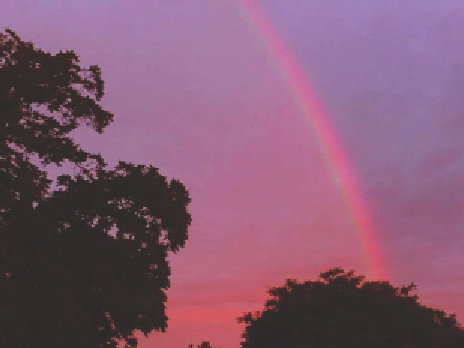Graphics Reference
In-Depth Information
ably complete and detailed discussion, see [12] or [26]. You should be able to
adapt the techniques developed here to simulate them.
The approach we take to simulating these effects come from [4]. We take
a Lee diagram, computed by the MiePlot application [25], showing the color
of scatered light at diferent angles based on the radius of water droplets, and
use that as a look-up map. The color of the effect at each point on a quad is then
determined by the angle of that point from the eye, and that color is added to
whatever color is already present. You can compute Lee diagrams that cor-
respond to each of the effects we will discuss, so this approach works for each
of our effects.
Rainbows
Everyone is familiar with rainbows. In Figure 16.14, we see a photograph of a
rainbow at sunrise. Note the structure of the rainbow: from the outside, we see
the common spectrum of light that we also see from a prism, with red going
through orange, yellow, green, blue, indigo, and then violet. Then further
inside, we see a general lightening in color as a white tint seems to be added to
the scene. Although this figure does not show it, there can also be a secondary
rainbow outside the primary one, with its colors reversed. In theory, though
very rarely seen, there may even be further rainbows.
The structure of a rainbow comes from the reflection of light from the
interior of water droplets in the air, as shown in Figure 16.13. This is examined
in more detail in Figure 16.15, showing that the particular angles for a plain
water droplet are approximately 41° ± 1°.
Figure 16.14.
A rainbow photograph showing the way it affects light in the atmosphere.



